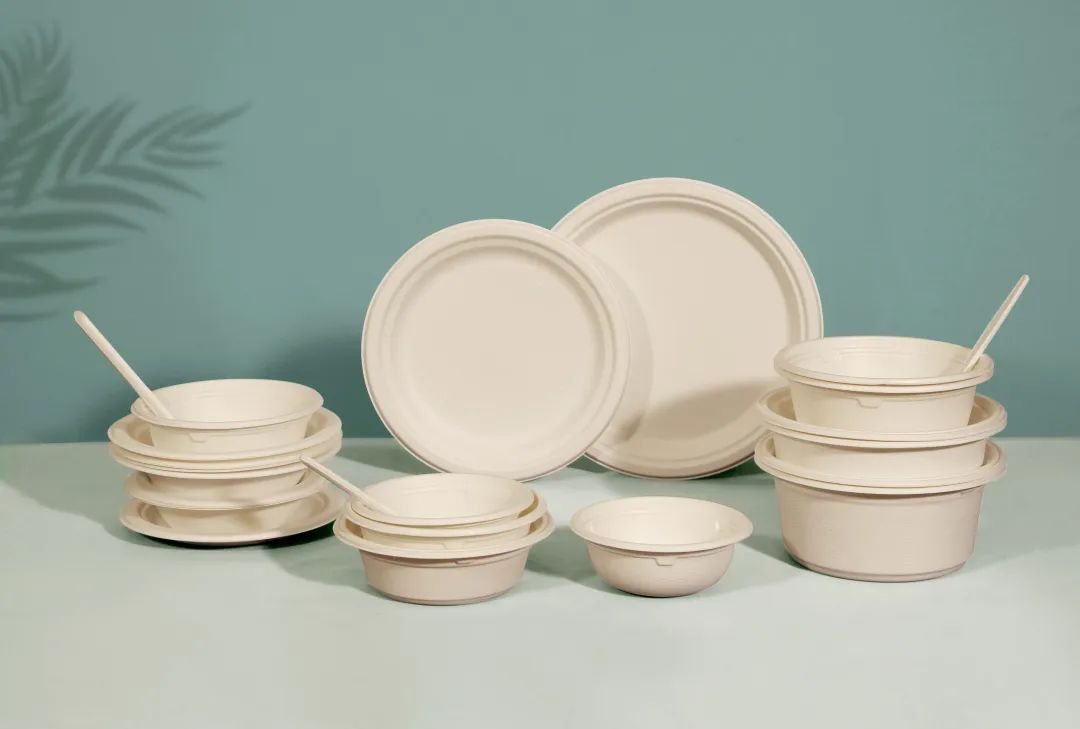Biodegradable Cutlery – HuiZhou YITO Packaging Co., Ltd. (goodao.net)
What are the current biodegradable tableware options? What is the difference? Inventory of popular disposable degradable tableware on the market
In the context of promoting environmental protection, more and more businesses are gradually replacing ordinary disposable lunch boxes with degradable tableware to reduce environmental pollution. There are also more and more types of environmentally friendly and degradable lunch boxes appearing in the market.
So what is a biodegradable lunch box? What are the main components of a degradable lunch box? What is the difference between degradable lunch boxes made of different materials?
Biodegradable tableware refers to tableware that can undergo biochemical reactions under the action of microorganisms (bacteria, molds, algae) and enzymes in the natural environment, causing external moldy to internal quality changes, ultimately forming carbon dioxide and water.
There are two types of materials used for degradable tableware: one is made of natural materials, such as paper products, straw, starch, etc., which can be fully degraded, also known as environmentally friendly products; Another type is made from plastic as the main component, adding substances such as starch and photosensitizers, which can be partially degraded.
Today, let’s take a look at the disposable degradable tableware on the market.
Corn starch based tableware
Corn starch based tableware is a common biodegradable food box in the current market. The main source of starch is corn, so it is sometimes called corn starch based. However, this type of food box is actually a mixture of starch and traditional petroleum based PP plastic, which is called bio based abroad.
Corn starch based tableware causes the physical properties of the entire material to collapse through the biodegradation of starch, but the petroleum based PP after collapse is still non degradable. The degradation rate can reach 40% -80% based on the composition of the lunch box, so it can only be considered a degradable lunch box, not a fully degradable one.
Therefore, corn starch based tableware can only partially replace plastic products and is currently a controversial alternative to plastic tableware in the market.
Pulp molded tableware (plant fiber molded tableware)
In terms of raw materials, pulp molded disposable lunch boxes use plant fibers such as wheat straw and sugarcane bagasse as raw materials, without adding any PP materials. They are formed through pulp molding wet pressing process, and food grade additives such as waterproof and oil proof are added to the pulp to achieve the effect of holding cold and hot food.
Plant fiber degradable lunch boxes are also one of the most active types of lunch boxes in the current market. Taking Hainan Province, which was the first to ban plastic tableware, as an example, Hainan Province has completely banned the use, circulation, sales, and storage of plastic tableware. Pulp molded tableware undoubtedly becomes an ideal plastic substitute.
Bagasse Sugarcane pulp disposable lunch boxes belong to the fully degradable type, which can be completely degraded into organic matter within 90 days under industrial or household composting conditions, returning to nature. They are truly biodegradable materials and have certain advantages on the road of plastic prohibition.
PLA degradable tableware
PLA degradable lunch boxes usually refer to products that combine PLA composite films with pulp molded products in the pulp molding process, namely PLA coated products.
PLA composite film is produced and processed from polylactic acid as raw material, which can be heated and compounded on pulp molding and paper products. It is a completely biodegradable film.
Polylactic acid (PLA) is a new type of biodegradable material made from starch derived from renewable plant resources. Starch raw materials are obtained through saccharification to obtain glucose, which is then fermented with certain strains to produce high-purity lactic acid. Then, a certain molecular weight polylactic acid is synthesized through chemical synthesis methods.
By combining the lamination process with pulp molded products, the use of waterproof and oil repellent agents can be saved, which can seal the pores of pulp molded products. In actual use, tableware reduces the breathability of the product, resulting in higher insulation performance and longer insulation time.
Disscuss more with William : williamchan@yitolibrary.com
Biodegradable Cutlery – HuiZhou YITO Packaging Co., Ltd. (goodao.net)
Post time: Oct-05-2023

